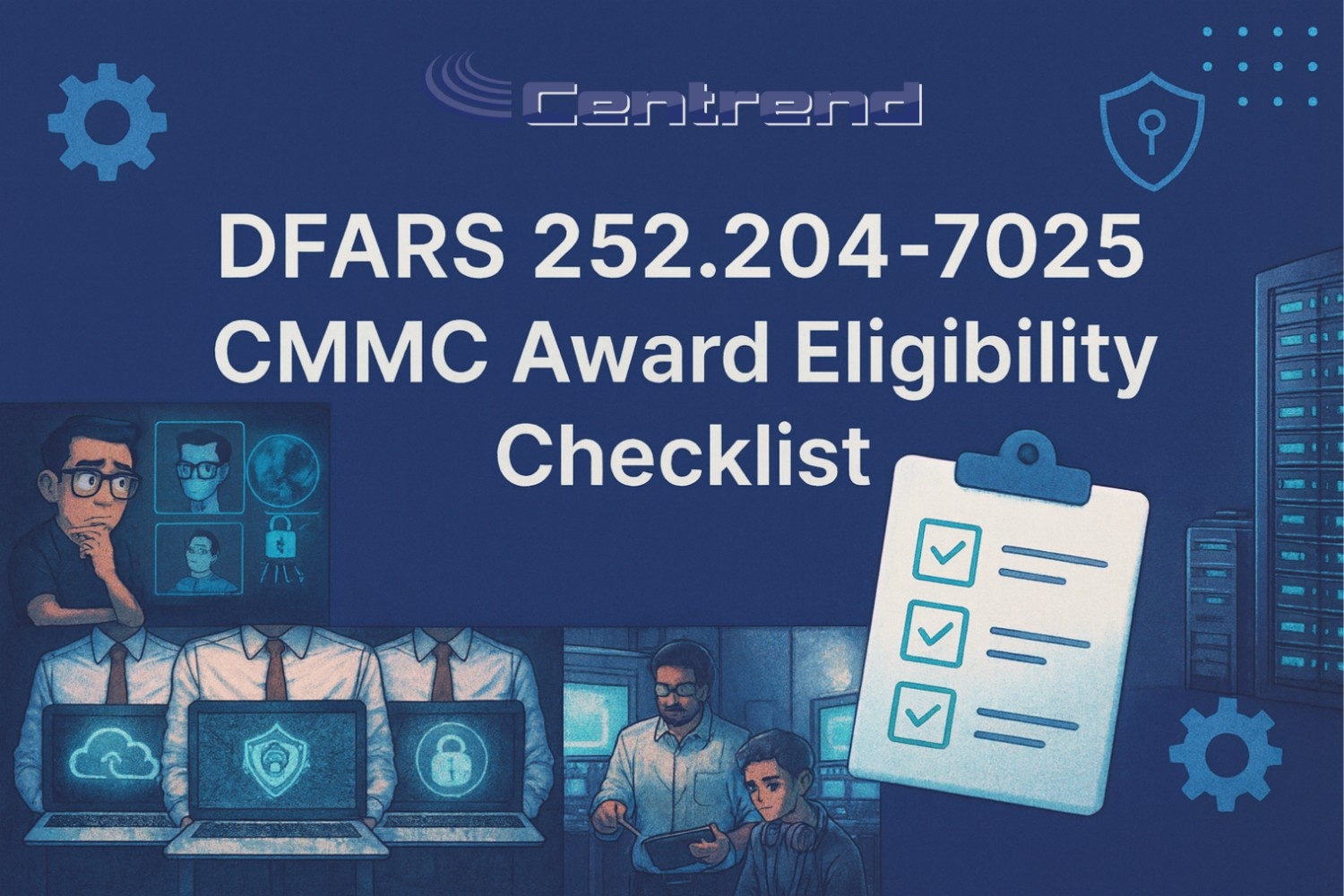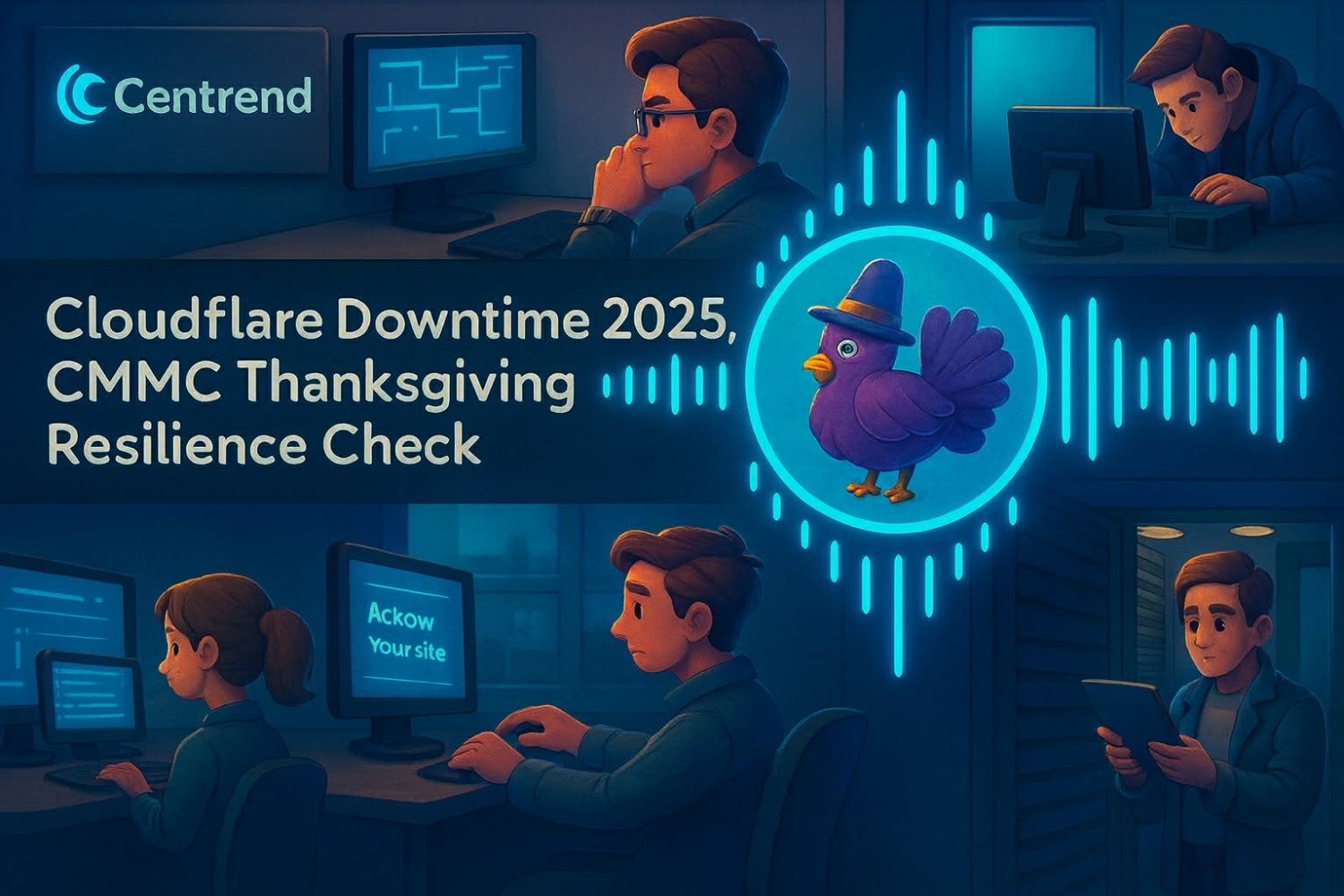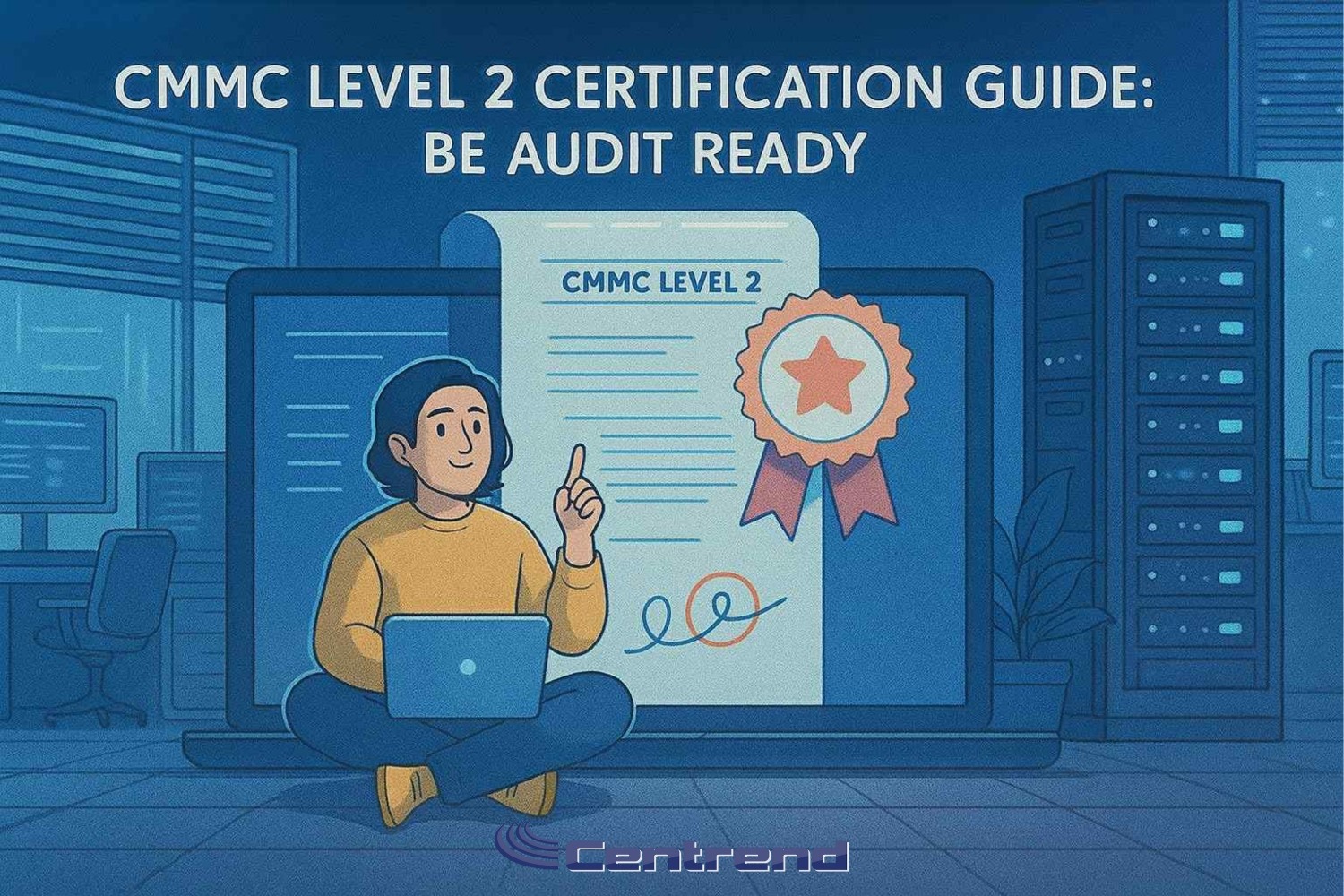DFARS 252.204-7025: CMMC Award Eligibility Checklist
DFARS 252.204-7025 is titled “Notice of Cybersecurity Maturity Model Certification Level Requirements”. It is a solicitation provision, not a contract clause. It appears when the government adds DFARS 252.204-7021 to the resulting contract.In plain terms, 7025: If those items are not current and correct, the government cannot legally award the contract to you. Your CMMC award eligibility checklist for DFARS 252.204-7025 Use this checklist before you commit to a CMMC related bid. Treat it like a short pre-bid gate review. 1. Read the exact CMMC level in the solicitation In the 7025 provision, the contracting officer fills in one required level: First step: confirm that your current or planned CMMC status actually matches that level for the systems you will use on this contract. Quick check 2. Map the bid to in scope systems, not just your company CMMC and 7025 do not care about your company in general. They care about the specific systems that will process, store, or transmit FCI or CUI for this contract. For each bid: If you are a prime, include major subs that will handle CUI. DFARS 252.204-7021 and the final rule expect subcontractors to have their own status and entries in SPRS, even though you cannot see their scores directly. 3. Verify your CMMC status in SPRS Next, move from paper to the real system the government checks: SPRS. For each in scope system, confirm that: If you went through a third party assessment, confirm that the C3PAO completed the process and that the record shows as final, not just “in progress”. 4. Confirm your annual affirmation is up to date The rule introduces an “affirming official” who must make an annual affirmation in SPRS that you are meeting your CMMC requirements. The term replaces older “senior company official” language, but the intent is the same. Ask three simple questions: If the affirmation is older than one year on the date of award or covers the wrong scope, your eligibility is at risk even if the CMMC status itself is still within the three year window. 5. Handle conditional CMMC status and POA&M deadlines Under the final rule, you can be awarded a contract based on a conditional CMMC status if certain gaps are documented in a POA&M. You then have 180 days to close those items and reach full status. For each contract you are bidding: This is a good place to pull in lessons from your outage or drill work. If patch cycles, vendor upgrades, or network changes are slow during peak periods, plan those POA&M items earlier in the year. 6. Check your subs early Many contractors are surprised when a strong proposal fails because a critical subcontractor is not ready. For any sub that will process FCI or CUI for this contract: You will not see their SPRS details, but you can still make “award readiness” part of your partner selection and capture process. 7. Align your story: SSP, boundary, and bid language DFARS 252.204-7025 is short, but it hooks into a larger story that includes your: Make sure the way you describe your environment and controls in the proposal matches what sits in SPRS and in your SSP. Misalignment here can lead to tense questions in negotiations or during later assessments. If you recently walked through outage drills, Cloudflare style resilience checks, or tabletop exercises, pull those notes into your evidence set. They support the idea that your security program is real, tested, and tied to your policies. A 30 day CMMC award readiness sprint If you want a simple path between now and your next CMMC related bid, use this short sprint. 1st Week: Get clear on your current state 2nd Week: Fix obvious blockers 3rd Week: Clean up SPRS and affirmations 4th Week: Bake eligibility checks into your capture process By the end of this sprint, your team can answer a simple but powerful question before every proposal: “If the contracting officer checked DFARS 252.204-7025 and SPRS right now, would we be clearly eligible for award” How Centrend can help your team move faster CMMC and DFARS 252.204-7025 are not just more paperwork. They are now part of the basic gate that decides who can win and who never makes it to evaluation. Centrend can help your team: If you want a quick outside view of where you stand, Centrend can lead a short DFARS 252.204-7025 Award Readiness Assesment Call so your next CMMC bid starts from a stronger position.
DFARS 252.204-7025: CMMC Award Eligibility Checklist Read More »










